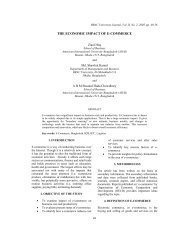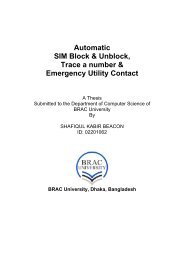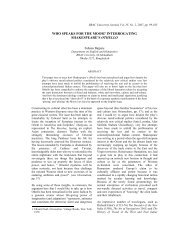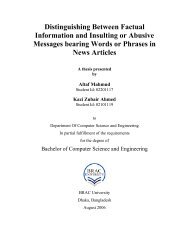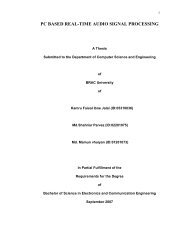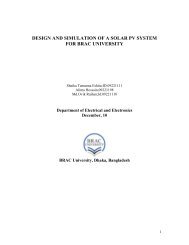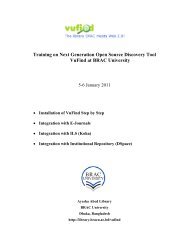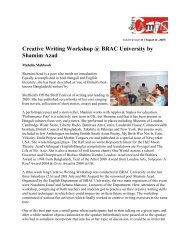LITERATURE SURVEY OF AUTOMATIC FACE RECOGNITION ...
LITERATURE SURVEY OF AUTOMATIC FACE RECOGNITION ...
LITERATURE SURVEY OF AUTOMATIC FACE RECOGNITION ...
You also want an ePaper? Increase the reach of your titles
YUMPU automatically turns print PDFs into web optimized ePapers that Google loves.
the brain recognizes a face has long fascinated neurobiologists, many of whom<br />
believe that the brain identifies faces as "special" and very different from other<br />
visual objects. The human brain combines motion and shape information to<br />
recognize faces and facial expressions. More recent studies have suggested that<br />
there may even be particular neurons tuned to the identity of one particular<br />
person. These neurons, according to that theory, lie in the "fusiform face area"<br />
FFA, known to be particularly active when a person encounters a face. An<br />
individual brain cell is capable of complex pattern recognition. Single neurons<br />
dedicated to the recognition of a particular person in different situations and<br />
appearances.<br />
Now scientist’s mission to design computers that “see” faces the way<br />
humans do provides more evidence concerning a debate in cognitive<br />
psychology. Aleix Martinez, assistant professor of electrical engineering at Ohio<br />
State University developed a model of how the brain recognizes the faces of<br />
people we’ve seen before, and how we distinguish facial expressions. He has<br />
shown that his model of this brain function that we use our knowledge of motion<br />
and shape combine together to recognize faces and facial expressions. These<br />
two activities take place in different areas of the brain, and some scientists<br />
believe that the mental processes involved are completely separate as well;<br />
others believe that the two processes are closely linked.<br />
1.3 In case of insect “Bees”<br />
Honeybees may look pretty much all alike to us. But it seems we may not<br />
look all alike to them. A study has found that they can learn to recognize human<br />
faces in photos, and remember them for at least two days. The bees probably<br />
don’t understand what a human face is, to the bees the faces are spatial<br />
patterns. Bees are famous for their patternrecognition abilities. new study shows<br />
that they can recognize human faces better than some humans can—with one<br />
ten thousandth of the brain cells.<br />
11






